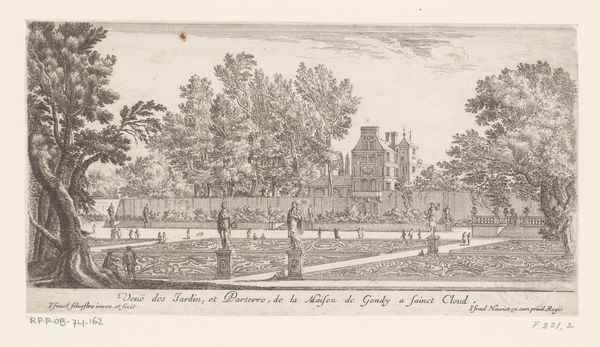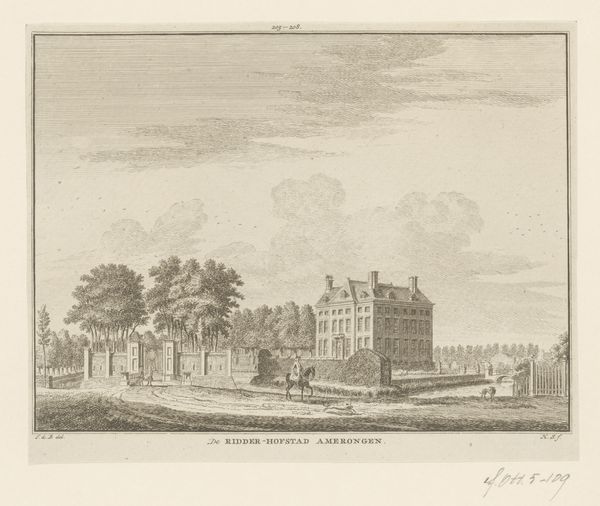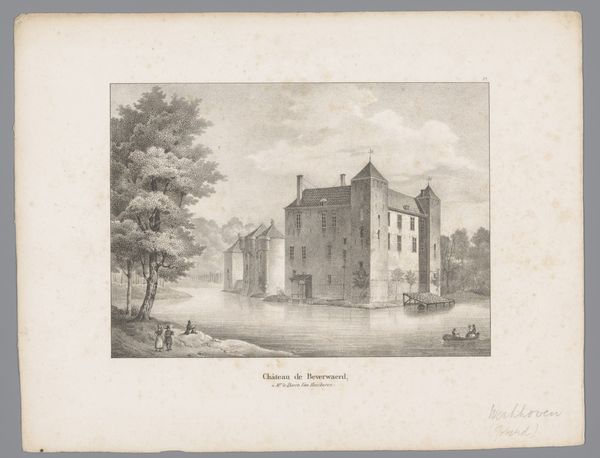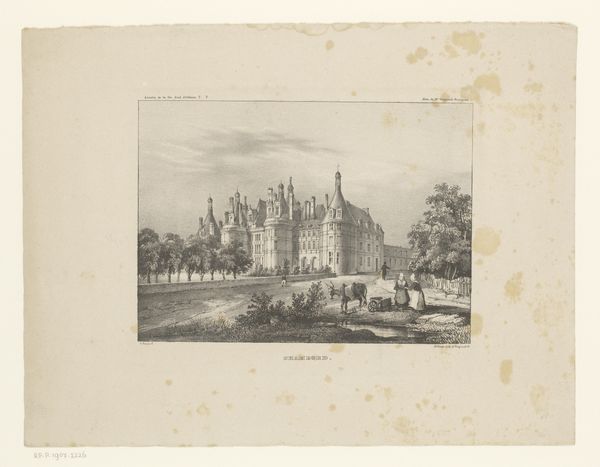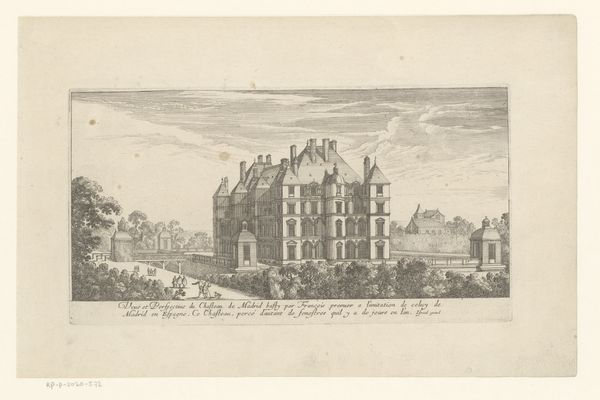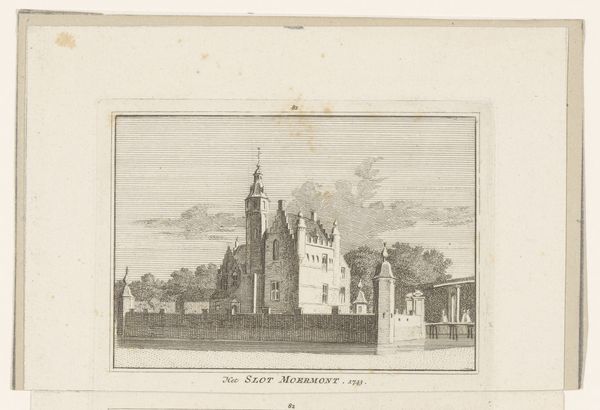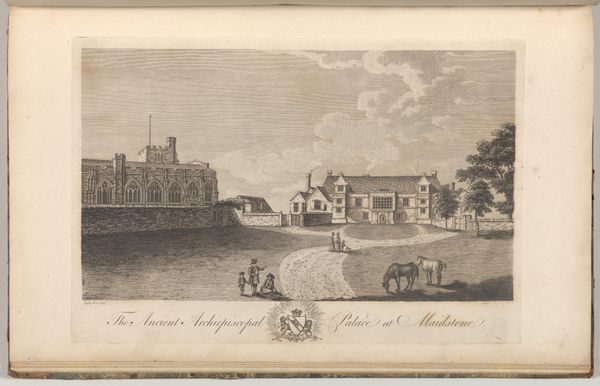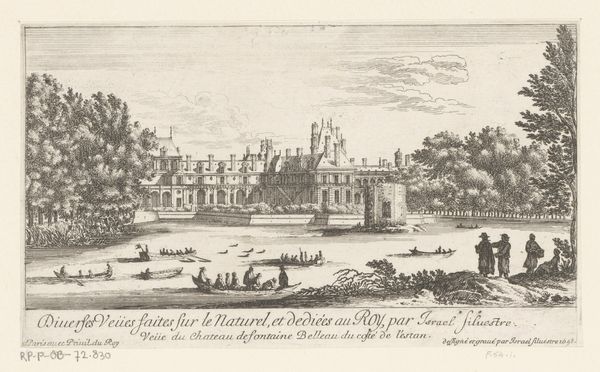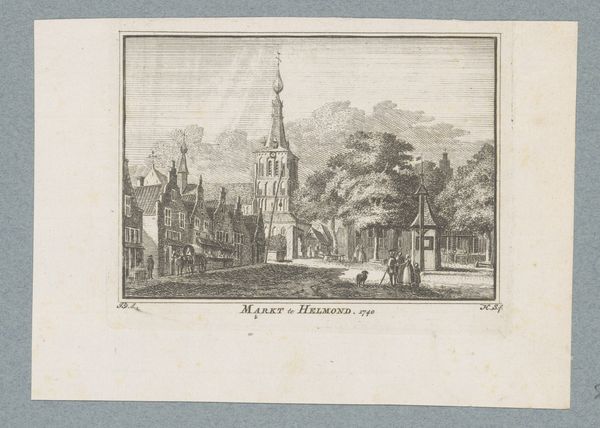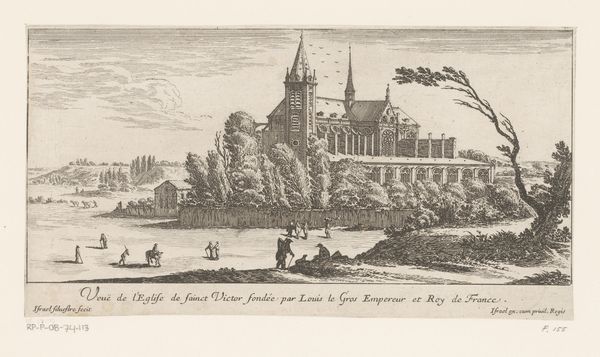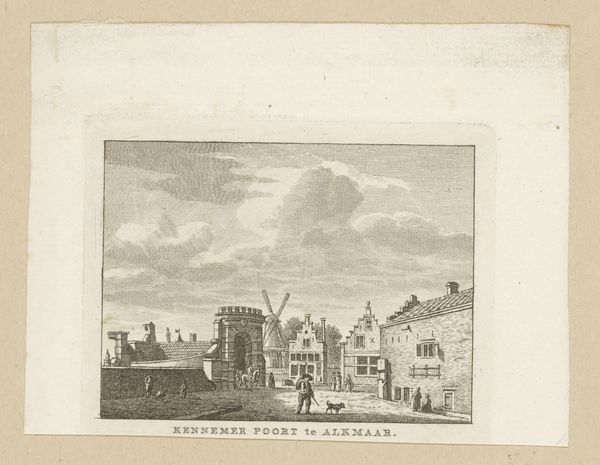
print, etching, engraving
# print
#
etching
#
old engraving style
#
landscape
#
etching
#
cityscape
#
engraving
Dimensions: height 110 mm, width 143 mm
Copyright: Rijks Museum: Open Domain
Curator: This etching, "Gezicht op het Kasteel van Gemert," dating from 1786-1792 by Carel Frederik (I) Bendorp, is part of the Rijksmuseum collection. The scene depicts a castle, surrounded by water, with figures in the foreground. Editor: It has such a delicate, almost ethereal quality to it. The detail achieved with etching and engraving seems really impressive, like looking at an idealized version of the Dutch countryside. What are some of the most striking material and historical details for you in this piece? Curator: The layering of the etching lines builds form from base material upwards, reflecting the social construction it represents: Land. Notice how the castle itself appears almost organic, emerging directly from the very lines representing land. The material reality is mediated via the control of etching. What could this mean in the late 18th century Netherlands, where land ownership defined political power? Editor: So, are you suggesting the artist subtly embeds commentary on labor or social hierarchies into this landscape? The control over the printing process mirroring land ownership. Curator: Precisely! Consider the process. The artist creates the plate, essentially 'owning' the image and thus the view. Then, prints are produced, making the landscape accessible—a controlled form of distribution much like land use at the time. The question then becomes: who has access to these prints, and what social class are they depicting, with their leisure pursuits visible even at the doorstep of such a feudal structure? Editor: I hadn't thought about it that way – how the physical creation of the print itself could echo these power dynamics. That's fascinating. Curator: By focusing on the production and distribution of the artwork, and the status conveyed, we can see how seemingly idyllic landscapes reinforce certain material and historical perspectives. This view isn't neutral; it's carefully constructed with class consciousness imbedded into every stroke of the printing plate. Editor: It gives you a completely different appreciation for something that I initially perceived as simply a pleasant vista. Curator: It really illustrates how deeply intertwined art production is with social and economic realities. Always dig beneath the surface of that printing plate!
Comments
No comments
Be the first to comment and join the conversation on the ultimate creative platform.

